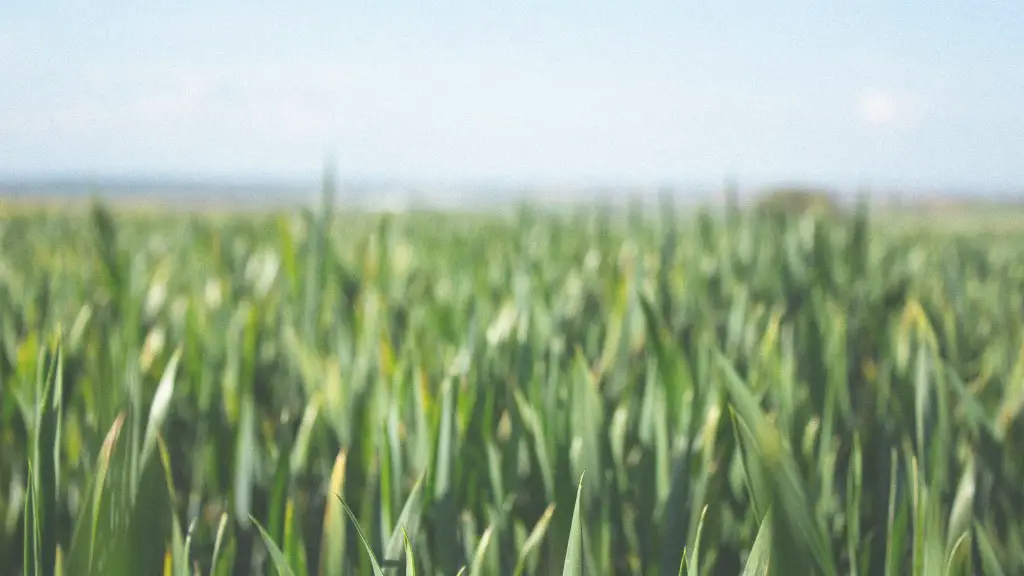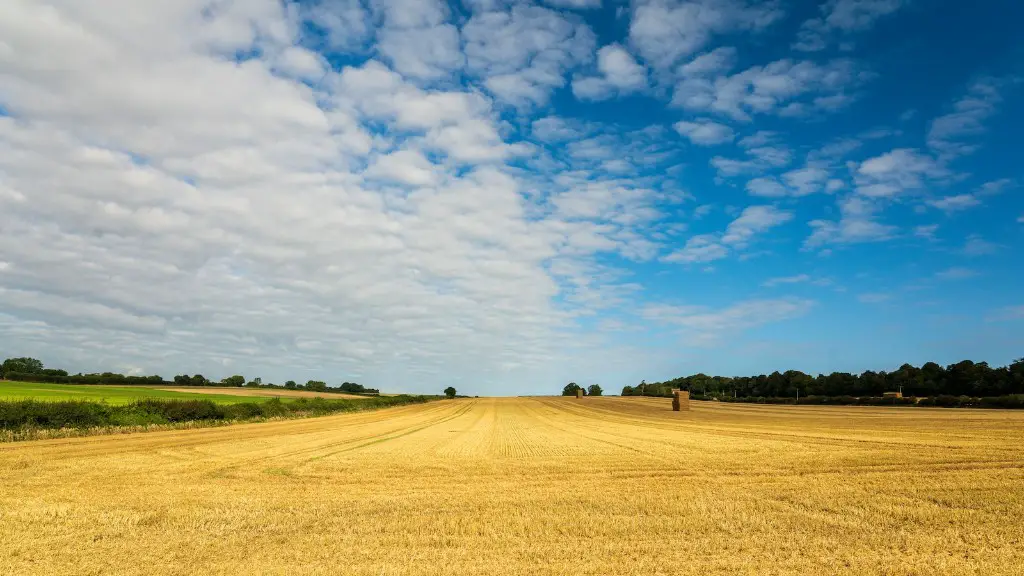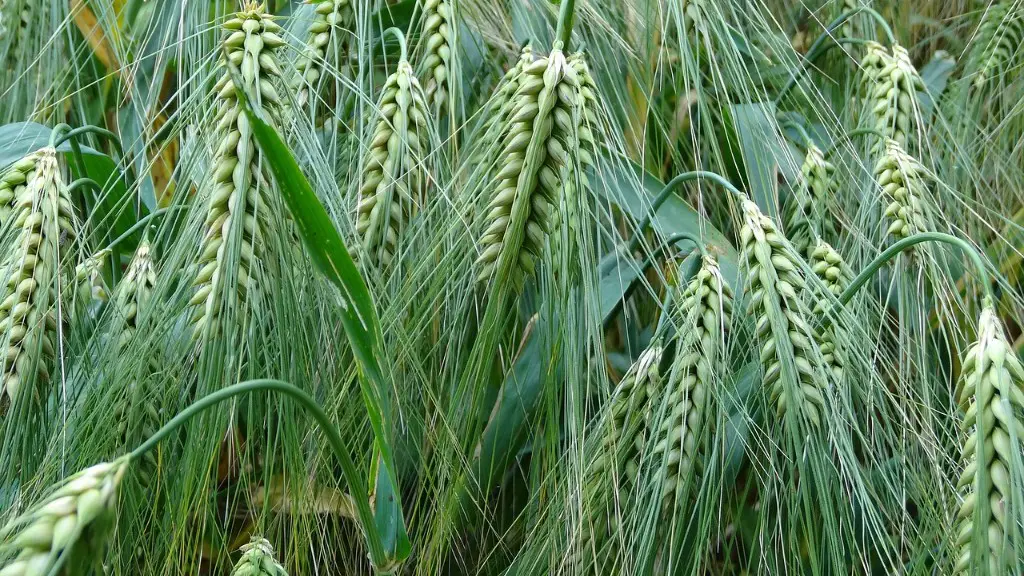Agriculture is a multi-faceted process that involves managing and growing crops. Feed is an important part of the successful farming process, providing essential nutrients for healthy crops. Feed is a coarse or finely divided edible material, designed to be eaten by livestock or other animals. It is composed of various ingredients, including grains, concentrates, forages and supplements. Feed can be manufactured, purchased as a pre-made mix or hand-mixed, and is used to supplement nutrition or stimulate production in agricultural animals across the globe.
At its core, feed determines the quality of livestock, poultry and aquaculture production by providing the nutrients required for their health and growth. As such, feed is considered the life-blood of both intensive and extensive farming systems. For example, in intensively farmed cattle and poultry, feed is the primary source of energy and protein. Feed also affects the meat and dairy quality, reproduction and performance of the animals.
Feed can be produced in a number of forms, allowing producers to meet their animal’s specific dietary needs. Types of feed products include grains, concentrates, oilseeds, by-products and supplements. Grains are the most widely used feed ingredient and are often used to supplement protein and other nutrients. Concentrates are ingredients that are rich in energy, fats and proteins, used to balance deficiencies in forages. Oilseeds provide valuable sources of energy and nutritional supplements for animals, and are used to enhance the energy and protein content of feeds. By-products from the grain milling and sugar industries are also used in feed mixes. Finally, supplements such as vitamins and minerals are used to ensure all nutrients are provided for healthy growth and development.
Feed is an essential part of agriculture and agricultural production, and careful consideration and management is vital for achieving successful crop yields. Feed is the basis for all livestock, poultry and aquaculture production systems, providing the essential nutrients required to fuel animals, support reproduction and optimize overall performance. Feeds are tailored to meet the specific needs of animal populations, and understanding the dietary needs and requirements of animals is key to successful production.
Feed has a critical role in animal welfare, with poor quality diets leading to reduced growth and poor performance, as well as potential health issues. With this in mind, feed needs to be studied and developed on the basis of nutrition, safety and the physical properties of each animal, including its digestive capabilities and specific requirements. The quality of products is also monitored and assessed to ensure that the animal is receiving the correct balance of nutrients and feed components.
Role of Trace Minerals in Animal Nutrition
Important in all areas of animal nutrition, trace minerals, also known as microminerals, are vital for animals’ growth, production and health. Trace minerals are available from dietary sources and from feed supplementation. Balancing the correct amount of trace minerals in the animal’s diet is vital for optimum performance and wellbeing. Trace minerals can be naturally present in crop and forage materials, but are often present at levels that are below the recommended requirements; hence supplementation is necessary to achieve the desired levels.
Most trace minerals are involved in the metabolism of carbohydrates, proteins, fats and vitamins, and they play an important role in the transport, absorption and utilization of nutrients. Some of the key trace minerals, including iron, copper, zinc, manganese, selenium and cobalt, help the animal to grow, convert nutrients into energy and produce hormones.
Ensuring adequate levels of trace minerals can be complicated, and therefore trace mineral supplementation is often beneficial to meet the desired levels of these minerals for optimal performance. Trace mineral requirements can vary enormously between different animal species and production scenarios, and so adjustments may have to be made.
Role of Nutritionally Balanced Feeds in Animal Nutrition
Feeds that are nutritionally balanced can provide solid foundations for successful animal production. Balanced feeds contain the right mix of macronutrients and micronutrients, including proteins, carbohydrates, fats, vitamins and minerals, thereby providing optimum nutrition and improved performance. Balanced feeds are especially important for intensively farmed animals, whose diets rely more heavily on feed ingredients.
When establishing balanced feeds for livestock and poultry, feed formulators consider the species, breed, age, lifestyle, nutrition and the environment. Introducing nutritionally balanced feeds into an animal production system can help to improve the quality of the feed, reduce waste, provide better nutrient availability and improve the efficiency of production.
Providing nutritionally balanced feed is essential for increased health and productivity of livestock, poultry and aquaculture producers. Balancing for minerals, vitamins and other nutrients helps to ensure animals are provided with optimal nutrition. Quality ingredients should be used to provide the right amounts of micronutrients; these ingredients can be balanced with the addition of supplementary minerals and vitamins to meet animal requirements.
Role of Feed Additives in Animal Nutrition
Feed additives are ingredients added to feed to supplement its nutrient content, enhance feed utilization and improve production performance. Feed additives are divided according to their functions and can include growth promoters, performance enhancers, feed replacements, feed preservatives, flavor additives and feed antioxidants.
Growth promoters and performance enhancers are key feed additives in livestock nutrition as they assist in improving production levels, digestibility and feed utilization. Feed replacements are ingredients which can be used to partially or completely replace existing feed ingredients. Feed preservatives are used to prevent spoilage and improve the storage time of feed. Flavor additives and feed antioxidants, meanwhile, are used to improve the taste and appeal of the feed, as well as reduce oxidative spoilage.
Feed additives can have a significant effect on livestock performance, depending on the specific additive used. Research is ongoing as to their development and use, and careful consideration must be taken in their application to ensure safety and efficacy of use.
Role of Feed Processing in Animal Nutrition
Modern feed processing is a key element of livestock nutrition. It allows feed to be safely and efficiently manufactured, preserving its nutritional content and leading to more efficient use. A range of cost-effective, safe and hygienic on-farm and centralised feed processing technologies are available. Grinding, mixing and pelleting are particularly common processing techniques used in animal feed production.
Normally, feed processing involves several steps in the order of grinding, mixing, pelleting and cooling, allowing the animals to receive nutritionally balanced feed. Grinding and mixing are key components of feed preparation, with energy sources and other ingredients mixed together to form a homogenous feed. This is then made into a pellet for easier storage, transportation and consumption.
Modern feed processing technology also allows for a wide range of different feedstuffs to be incorporated into the diet, and for the nutrition of the feed to be monitored and improved. It should also be noted that feed processing, mixing and pelleting are essential components of beneficial microbial and enzyme formulation strategies.
Role of Feed Quality in Animal Nutrition
The quality of feed plays an important role in livestock and poultry nutrition. Different animal species require different grading of feed, and the quality of the feed will determine its nutrient content. Similarly, the age of an animal will affect the quality required, as young animals need softer feeds until they grow teeth. Furthermore, feed quality is affected by issues such as seasonal variation in temperature, moisture content, conditions of transport and storage.
Careful consideration of feed components and ingredients is key to producing feed of the highest quality. Material used must be free of contaminants, disease and other health risks. Feed hygiene for safe storage and animal health must also be taken into consideration, with a focus on the sanitary conditions in the feed production facilities.
Feed testing is another essential component of producing high quality feed, and involves testing for nutrient levels, digestibility, levels of hazardous contaminants and bacteria, as well as nutritional value and importantly, correct labeling. Feed testing helps to produce feeds of consistent quality, as well as to protect consumers and ensure the long term sustainability of the industry.
Role of Feed Management in Animal Nutrition
Feed management is an important component of livestock, poultry and aquaculture production. Good management practices help to ensure the animals are provided with the best possible nutrition, meaning they can reach their full production potential. Feed management practices involve examining all aspects of feed production, from the establishment of nutrient requirements, to the selection of feed ingredients, feed formulation and the balancing of feed.
Effective management of feed stock will also lead to increased efficiency. Incorporating management strategies such as crop and forage production, forage conservation, silage and hay making, feed storage and preservation, and ration formulation are also important aspects of feed management.
In addition, feed management also includes monitoring and analysing the analytical data obtained from feed evaluation experiments. The key aim of such experiments is to determine the feed’s nutritional value, including protein and energy levels. These experiments are used to measure the effects of the feed supply on the nutrition and performance of the animals, allowing producers to then formulate appropriate rations and balances of ingredients.
Feed management is a crucial part of producing quality feed and successful animal production. By applying up-to-date management practices, producers can ensure that their animals have access to the best nutrition and feeds, enabling them to reach their full production potential.





